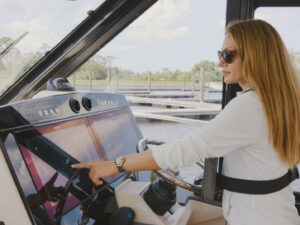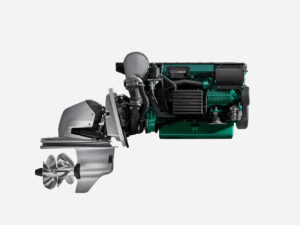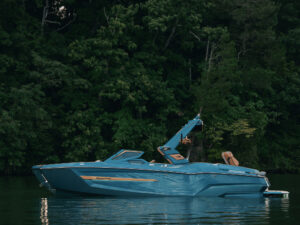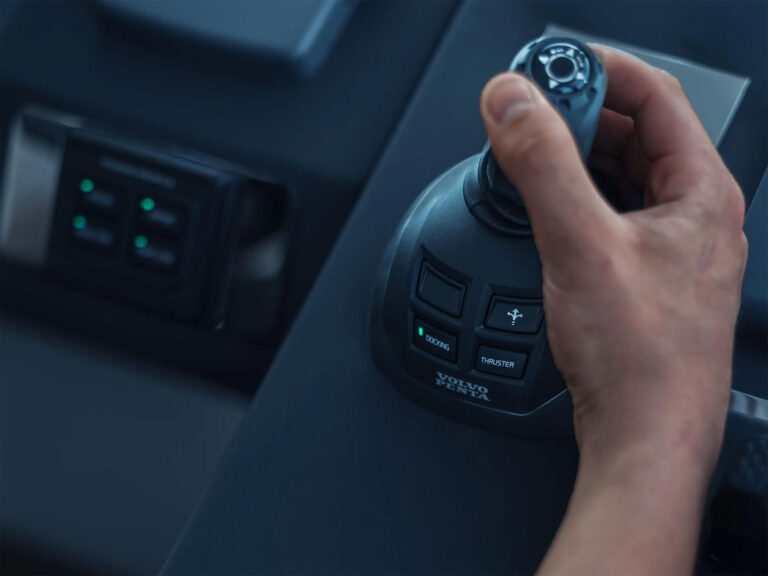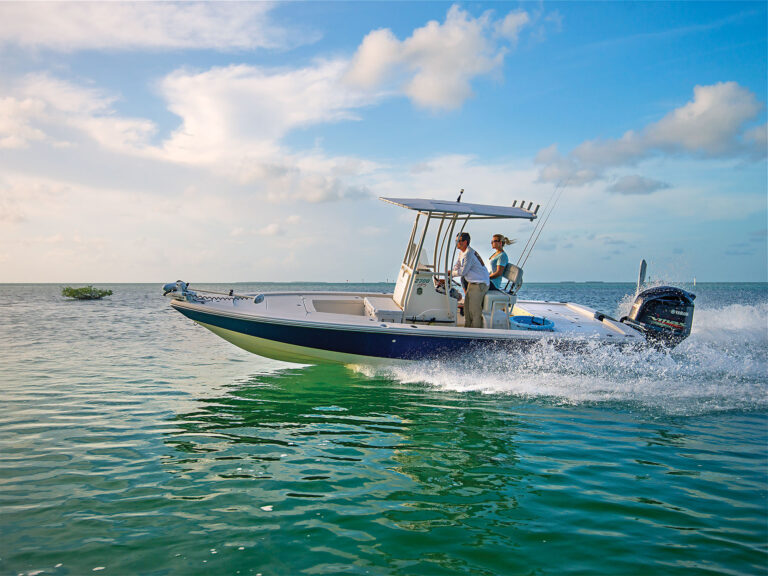Overview
Odds are that few boaters could imagine Sea-Doo unveiling a pontoon boat. Maybe it makes perfect sense. Pontoon sales are booming, and Sea-Doo’s Spark proved an innovative, competitively priced, and easy to tow, stow and go alternative for new buyers in the PWC market. So, maybe the Switch can repeat history.
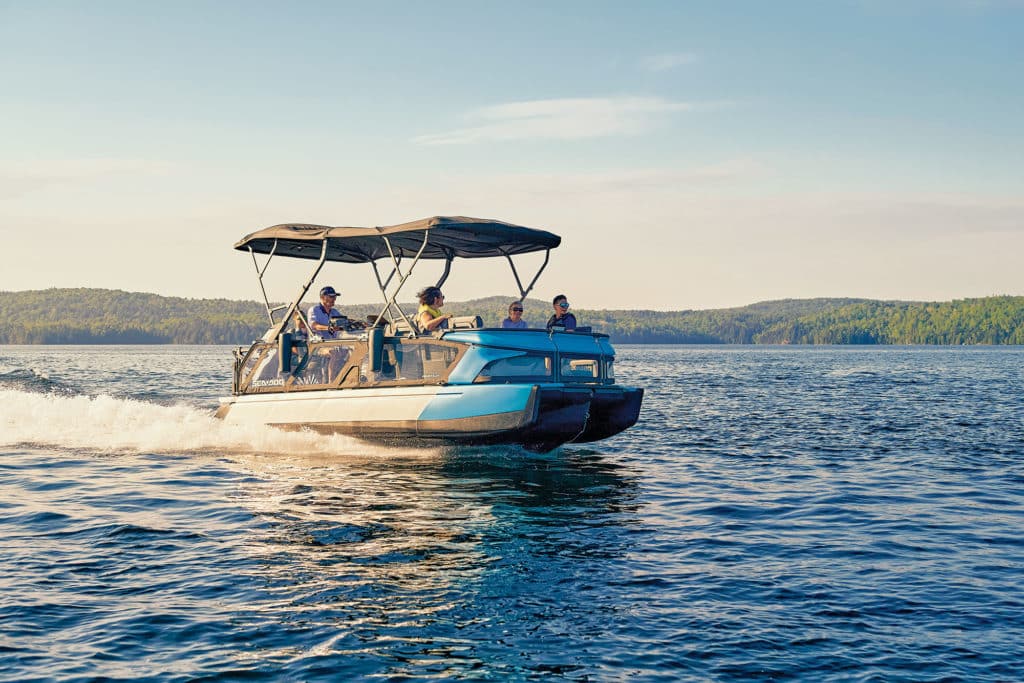
Measuring 20 feet, 5 inches in length overall, the Switch 21 Cruise is the longest of three models, and it features one of three trim packages: Base, Sport and Cruise. Although it’s in the pontoon category, you’ll find no aluminum tubes below the Switch’s deck. Instead, it’s a tri-hull, its trio of V-bottom hulls fabricated from PolyTec, the proprietary mix of polypropylene and glass fibers introduced on the aforementioned Spark and, now in its second generation, used on multiple PWC hulls in the Sea-Doo line. The dominant center hull, extending 7 inches deeper than the narrower outer hulls, is similar to a Sea-Doo PWC hull in shape and houses the engine, fuel tank and jet pump. Outer hulls reveal individual segments packed with closed-cell foam flotation. The reason for the latter is because Switch models are assembled in Lego-like fashion. Take the common components—center hull, bow and stern—then add or subtract segments in between to reach the desired total. Bolted cross members tie it all together.
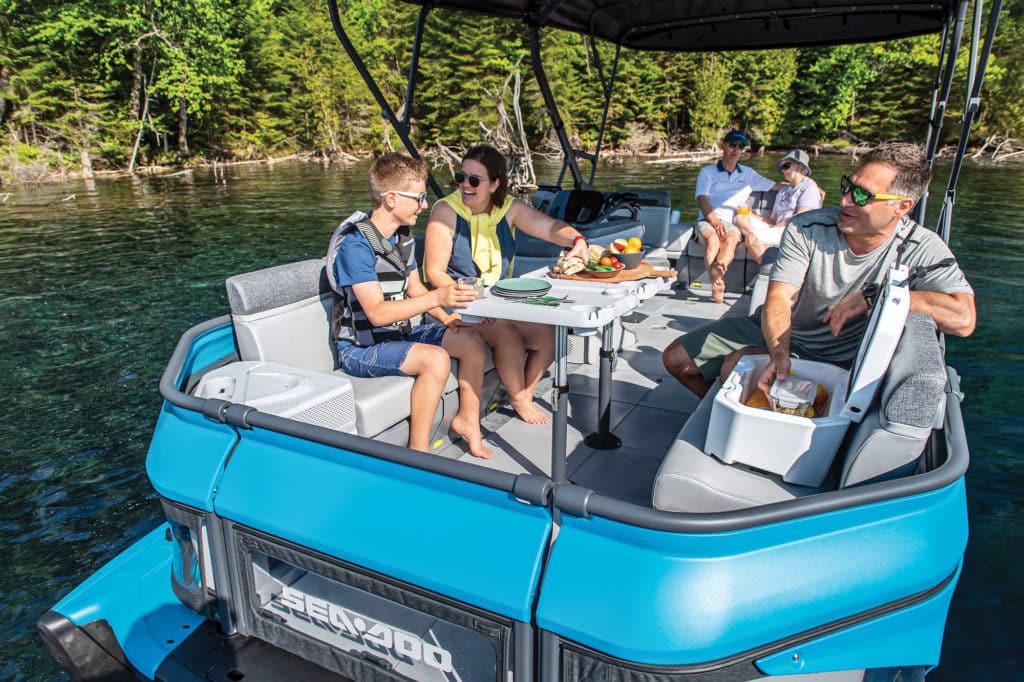
Interior and Accessories
More conventional pontoon norms fall by the wayside above the deck. Rather than aluminum panels, the Switch uses a clear, durable vinyl to enclose the openings framed by the sturdy, powder-coated, extruded aluminum perimeter rail. The look is definitely unique, but has practical benefits. The captain enjoys better visibility than on a typical pontoon when approaching a dock or watersports rider. The clear enclosure also plays a visual trick, making the boat seem much larger and more open to those on board.
One glaring omission is the single boarding gate at the bow. That’s fine if you’re always able to find accommodating dock space, but odds are that passengers will be stepping over the side rail, something that less-agile consumers should consider. A rear corner-entry gate can be added depending on the configuration, but a side-entry gate is most desirable.
Another unique choice is the decision to use the PWC-style handlebars and trigger throttle at the helm. However, it’s the right choice for a jet drive. Handlebar control, combined with the right-side trigger throttle and Sea-Doo’s Intelligent Brake & Reverse (iBR) lever on the left, provides intuitive, pinpoint handling in tight quarters, such as a dock or ramp. The iBR uses a modified reverse bucket to deflect thrust, mimicking the feeling of gears. With minimal practice, you’ll find yourself quickly toggling between forward, neutral and reverse to easily pull in and away from a dock, and even spin the boat almost within its own length. It’s more precision control than offered on the typical pontoon. Sea-Doo also wisely retooled the handlebars-based cruise-control function so that drivers won’t have to maintain constant throttle pressure at speed.

The Switch’s deck is covered in a grid-like structure of 18-inch plastic tiles, the majority of which feature a slot pattern that pair with mounting hardware at the base of seating and furniture components. That lets owners customize the configuration. Assemble individual seats into couches for a cruise, add corner tables with integrated speakers for a party, or clear the decks to access nearly the entire perimeter when fishing. To change the setup, just pull the T-handle to release and rearrange components, then push the handle in to lock them in place. Also, 5/16-inch-thick polyurethane mats snap into position for a softer, more comfortable feel underfoot.
Engine
Power? Our test boat’s supercharged 230 hp Rotax 1630 ACE four-stroke is the larger of two engine offerings on 21-foot models, but don’t expect the kind of numbers that powerplant produces on a 1,700-pound lighter PWC. Though Sea-Doo estimates 44 mph, we recorded only 38 during our mid-October test with two passengers on Florida’s Indian River. Still, that’s in line with Bennington’s 20 SVSR ($32,846 with a Yamaha 115 and the SPS triple-tube performance package), which peaks just over 35 mph, or SunTracker’s Party Barge 22 XP3 ($47,495 with a Mercury 150 and triple-tube performance package), which nears 36 mph. Jet propulsion has the advantage of shallower draft and no exposed prop, but a propeller-driven outboard is more efficient, giving outboard power the edge in fuel economy. Both competitors offer traditional pontoon layouts, but there’s no changing the floor plan once purchased.
As to handling, the Switch has the sportier feel. Crank those handlebars at speed, and it powers into a fun, aggressive corner with an intuitive inside lean. That playful nature also breaks from the norm—and adds yet another element to this new pontoon boat’s personality.
Read Next: The Evolution of Personal Watercraft
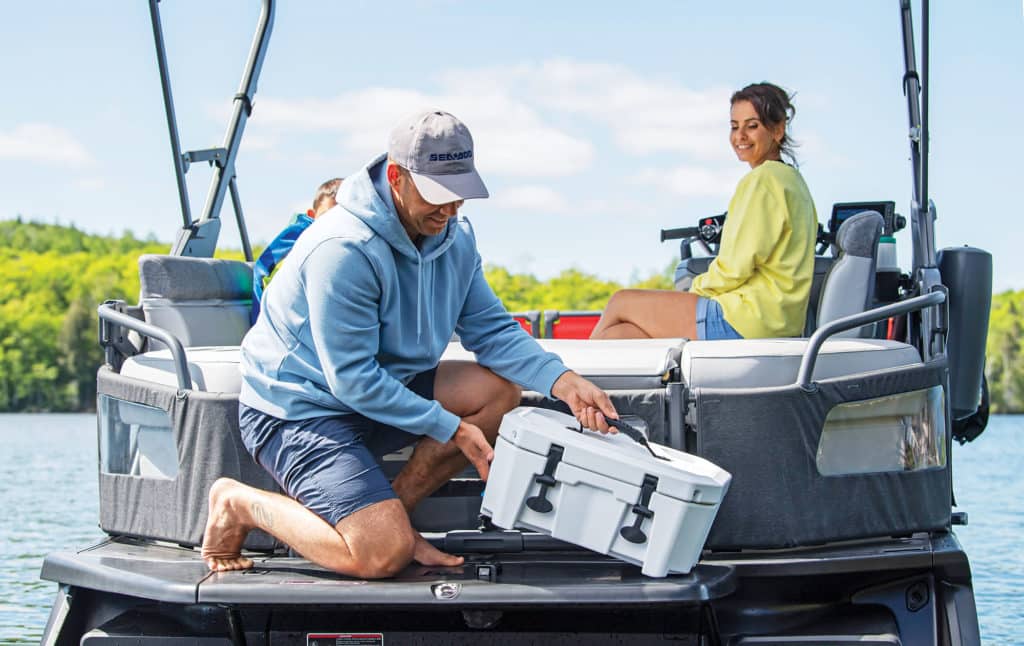
How We Tested
- Engine: Rotax 1630 ACE-230
- Pump/Impeller: 161 mm high-pressure pump/stainless steel
- Gear Ratio: 1.00:1 Fuel Load: 29 gal. Crew Weight: 365 lb.
High Points
- Interior and swim-deck accessories include storage boxes and coolers, and use pop-up LinQ cleats. Rail-mount accessories include cup holders, board racks and fenders.
- Integrated anchor locker is convenient and keeps wet ground tackle off the deck.
- Standards include closed-loop engine cooling, 7-inch Garmin touchscreen GPS, Bluetooth audio system, Bimini, corner tables, in-floor cargo locker and painted trailer.
Low Points
- Difficult to board due to lack of a side gate, plus an abbreviated swim platform.
- While not louder than outboards, jets create a higher-rpm whine that might irritate some people.
Pricing and Specs
| Price: | $36,499 (with Rotax 230) |
| LOA: | 20.4′ |
| Beam: | 7.8′ |
| Draft (max): | 19.3″ |
| Displacement: | 2,508 lb. |
| Bridge Clearance: | 4’9″ |
| Fuel Capacity: | 29 gal. |
| Max Horsepower: | 230 |
| Available Power: | Single Rotax 170 or 230 hp 1630 ACE |
Speed, Efficiency, Operation
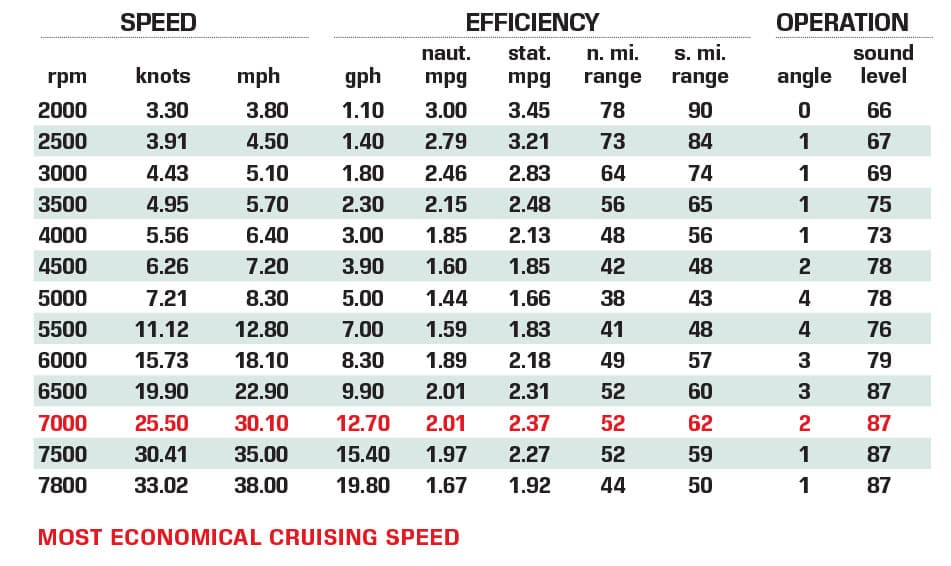
Sea-Doo – Valcourt, Quebec; 888-272–9222; sea-doo.com

